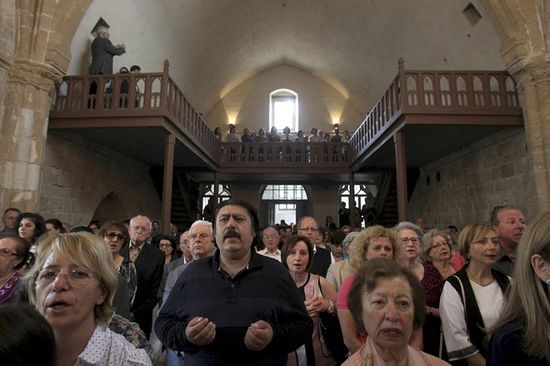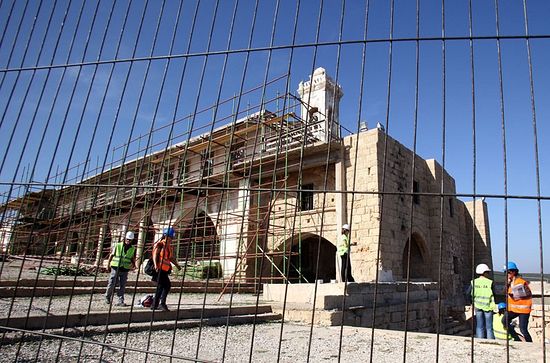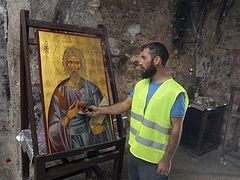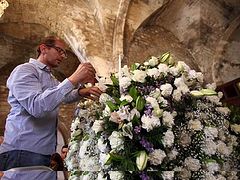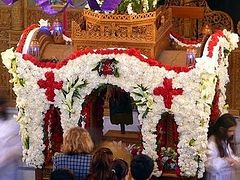Source: Cyprus Mail
By Evie Andreou
The Restoration of religious monuments, churches, mosques and graveyards signifies acceptance of each community’s right to worship and also enables people to critically examine their own attitudes and actions concerning other communities.
This year, parallel to the on-off political talks, several historic events took place, the highlight of which is the start of restoration of the Apostolos Andreas monastery situated in the Karpasia peninsula.
All events are part of the efforts to build trust among the two communities, something that the negotiations have failed to do over the last fifty years. The catalysts were the bi-communal technical committee on cultural heritage that aims to restore important cultural monuments of both communities throughout the island and of the Religious Trust for Peace
Process initiative facilitated by Sweden aiming at the cultivation of good relations between the island’s two religious leaders of the two communities, Archbishop Chrysostomos II and Mufti Dr Talip Atalay, as well as leaders of other religious minorities on the island.
After years of dispute as to how the monument was to be restored, works at one of the most important religious sites to Greek Orthodox pilgrims, the Apostolos Andreas monastery, begun in September, following the signing of two contribution agreements worth € 2.5m each by the Church of Cyprus and the Evkaf Administration.
Facilitators of the project is the cultural heritage committee, while the United Nations Development Program (UNDP) oversees the project, carried out by a consortium of two construction companies, a Greek Cypriot and a Turkish Cypriot, following the architectural designs of the University of Patras.
The restoration works are scheduled to be completed by April 30, 2016.
The theory goes that when communal identities are causal factors in conflict, traditional diplomacy may be of little value in seeking peace or conflict management.
We would be naive however to believe that the restorations or these rapprochement initiatives could take place without the consent of the political leadership. In every case mentioned all the stake-holders admitted that nothing would have been possible without the consent of authorities on both sides of the divide.
In April thousands of Greek Cypriots, most refugees, flocked to the Ayios Giorgos Exorinos church in Famagusta where they attended a Good Friday service worship for the first time since 1957.
About a month later and after five decades, the traditional Armenian quarter in northern Nicosia welcomed back many of its former residents that fled due to the inter-communal troubles of the 1960s. Some had even travelled from abroad to attend the first liturgy since 1964 to be held at the renovated medieval church of Virgin Mary, or Sourp Azdvadzadzin, located in the heart of the quarter.
In June mufti Talip Atalay recited a prayer in the Taht-el kale mosque in Nicosia, which has been closed for 51years, after an invitation he received by the archbishop and he also visited other mosques in Nicosia.
Atalay also visited a number of Muslim monuments in Paphos in September including the Mouttalos mosque where he prayed with around 100 faithful in the presence of the Archbishop Chrysostomos.
Chrysostomos had said that his effort and that of the mufti is to bring both communities of Cyprus together and preserve all the Islamic and Christian monuments on either side of the dividing line.
Another important event was the crossing of around 1,000 pilgrims from the north including settlers, at the Hala Sultan mosque in Larnaca on November 22, to celebrate the first day of the year according to Islamic calendar.
This year the Archbishop, who was until now not known for his rapprochement skills, had said some ten days prior to the pilgrimage that he had spoken with Foreign Minister Ioannis Kasoulides ‘giving his blessing to a visit to the Hala Sultan Tekke’ and that the minister had agreed.
Just before the year was out, the Deneia mosque – the first site from a list of 40 selected by the Technical Committee to benefit from emergency measures – was restored and opened for prayer at the beginning of December.
Representatives on both sides said that the ongoing restoration of mosques and churches across the divide was sending a message of understanding and tolerance.
Throughout this challenging year, amidst rising unemployment, threats for foreclosures, faltering negotiations and public spats between politicians, it was refreshing to see initiatives like these that really contribute to peace promotion and reconciliation by correcting some of the wrong doings of the past.

